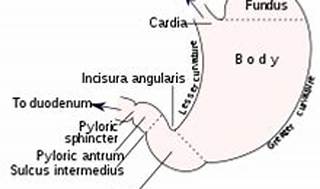A nurse is conducting discharge teaching to parents about the care of their infant after cardiac surgery. The nurse instructs the parents to notify the physician of what conditions occur. (Select all that apply.).
Respiratory rate of 36 breaths/minute at rest.
Appetite slowly increasing.
Temperature above 37.7° C (100° F).
New, frequent coughing.
Turning blue or bluer than normal.
Correct Answer : A,C,D,E
The correct answer is choices A, C, D, and E.
Choice A rationale:
A respiratory rate of 36 breaths/minute at rest is concerning in a pediatric client, as it may indicate respiratory distress or an underlying respiratory condition.
Choice B rationale:
An increasing appetite is generally a positive sign and not typically concerning unless accompanied by other symptoms.
Choice C rationale:
A temperature above 37.7° C (100° F) is concerning as it indicates fever, which could be a sign of infection or other medical conditions.
Choice D rationale:
New, frequent coughing is concerning as it may indicate respiratory infections, asthma, or other respiratory issues.
Choice E rationale:
Turning blue or bluer than normal (cyanosis) is a serious symptom indicating inadequate oxygenation and requires immediate medical attention.
Nursing Test Bank
Naxlex Comprehensive Predictor Exams
Related Questions
Correct Answer is B
Explanation
Choice A rationale:
Performing 100 Kegel exercises each day is not necessary and might lead to muscle fatigue. The number of exercises can vary from person to person. Quality is more important than quantity when performing Kegel exercises.
Choice B rationale:
This statement indicates a correct understanding of Kegel exercises. Holding the contraction for 10 seconds and then resting for 10 seconds between exercises is a common and effective technique. Kegel exercises help strengthen the pelvic floor muscles, which can be beneficial during pregnancy and after childbirth.
Choice C rationale:
There is no requirement to perform Kegel exercises only in the sitting position. These exercises can be done in various positions, such as sitting, standing, or lying down, depending on the individual's comfort.
Choice D rationale:
Performing Kegel exercises throughout pregnancy, starting early and continuing postpartum, can provide optimal benefits. There's no need to wait until the last trimester to start these exercises. Regular practice can help improve pelvic muscle tone and prevent issues such as urinary incontinence.
Correct Answer is C
Explanation

Explore
The correct answer is choice C. Visible peristalsis and weight loss.
Choice A rationale:
Abdominal rigidity and pain on palpation are not typically indicative of pyloric stenosis. These symptoms could be associated with a variety of other gastrointestinal conditions.
Choice B rationale:
A rounded abdomen and hypoactive bowel sounds are not specific to pyloric stenosis. These symptoms could be seen in various gastrointestinal disorders.
Choice C rationale:
Visible peristalsis and weight loss are classic symptoms of pyloric stenosis. The condition causes a narrowing of the opening from the stomach to the small intestine, preventing food from passing through. This leads to vomiting after feeding, persistent hunger, and weight loss since very little food passes to the small intestines.
Choice D rationale:
Distention of the lower abdomen and constipation are not typically indicative of pyloric stenosis. These symptoms could be associated with a variety of other gastrointestinal conditions.
Whether you are a student looking to ace your exams or a practicing nurse seeking to enhance your expertise , our nursing education contents will empower you with the confidence and competence to make a difference in the lives of patients and become a respected leader in the healthcare field.
Visit Naxlex, invest in your future and unlock endless possibilities with our unparalleled nursing education contents today
Report Wrong Answer on the Current Question
Do you disagree with the answer? If yes, what is your expected answer? Explain.
Kindly be descriptive with the issue you are facing.
